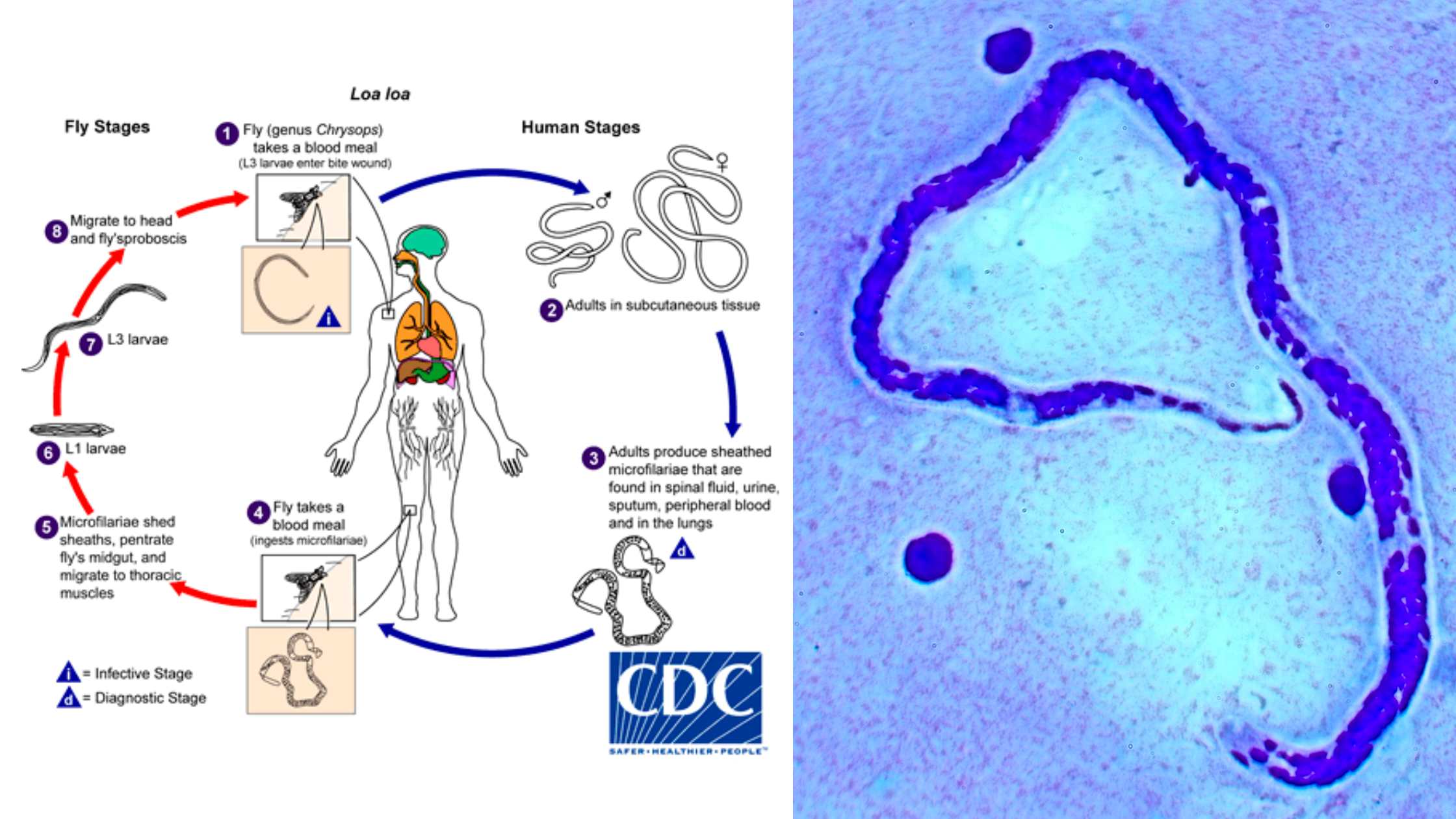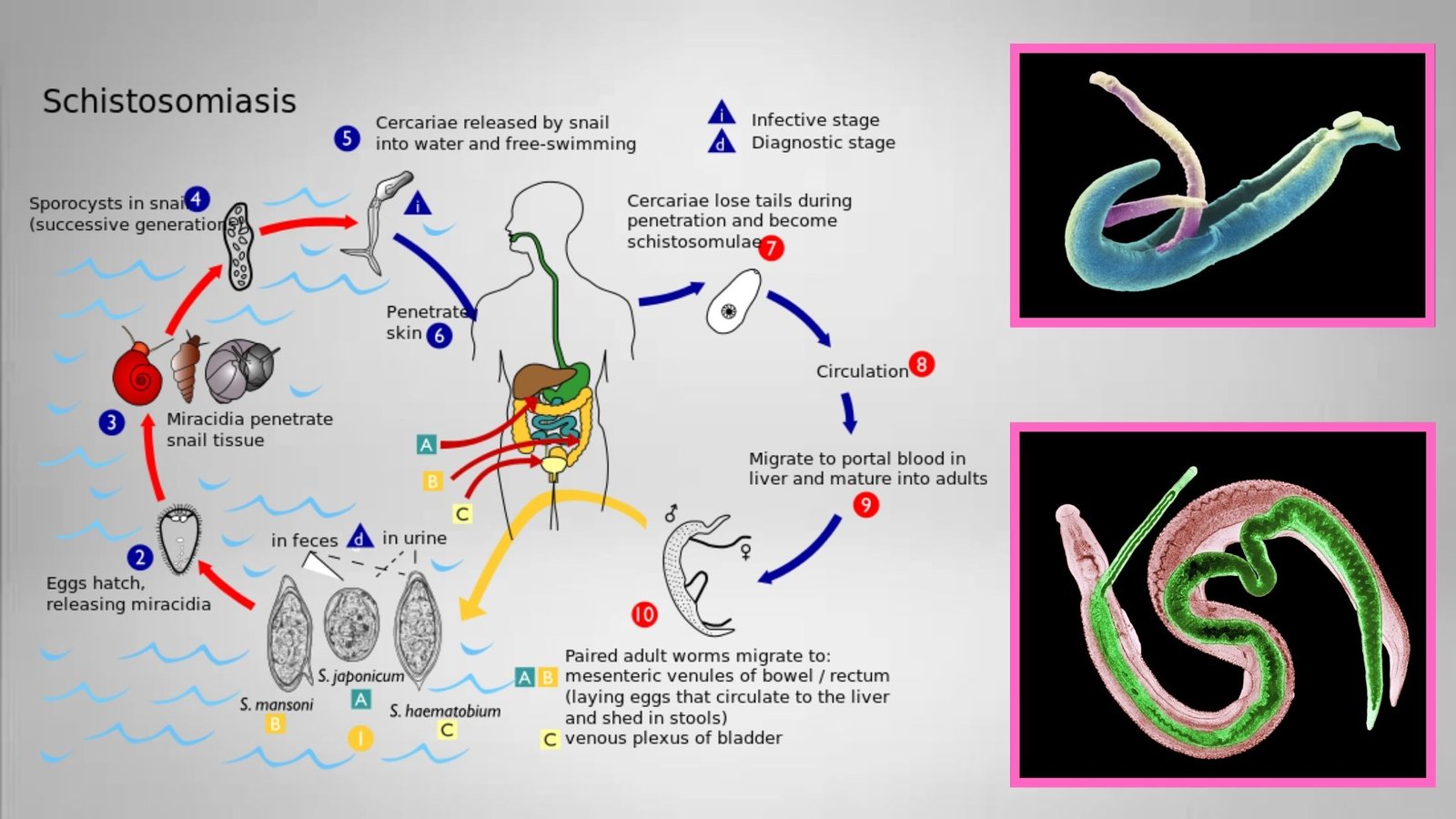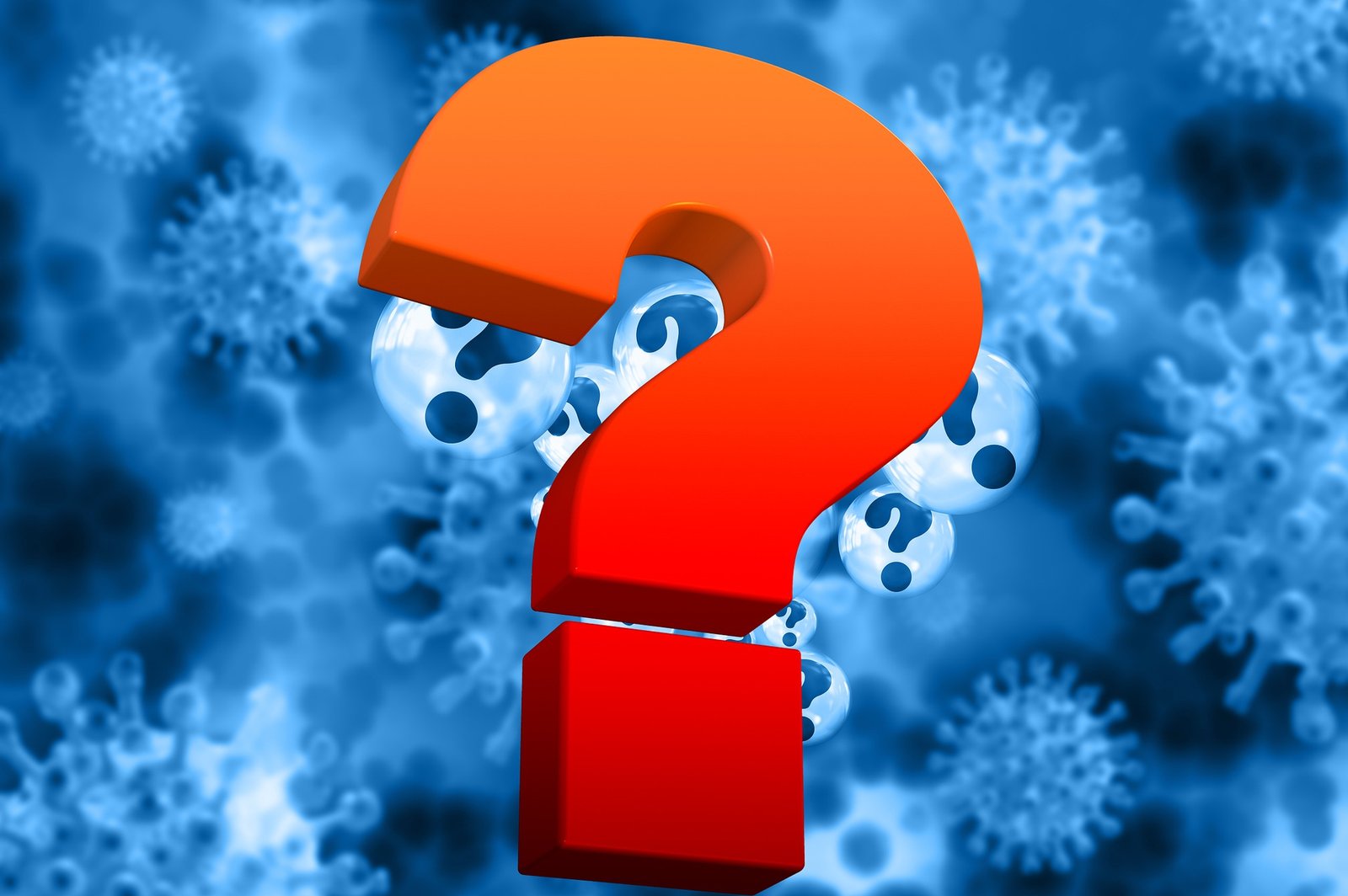Loa loa Life cycle, Morphology, Pathogenesis, Diagnosis, Transmission, Treatment
What is Loa loa? Epidemiology of Loiasis Morphology of Loa loa Loa loa Life Cycle The life cycle of Loa loa is a complex process involving two hosts: humans as the definitive host and Chrysops flies as the intermediate host. The cycle begins with the transmission of the parasite through the bite of an infected … Read more



